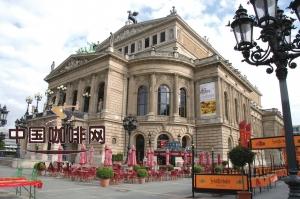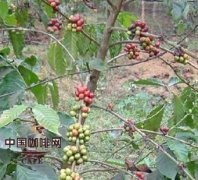Café Life Cafes in Paris with a human touch
As the art center of the world, Paris achieved unprecedented prosperity before World War II. Such as Picasso, Stein, Hemingway, Joyce and so on have lived in Paris for many years, and some even died in Paris. Even after the war, Paris was a dream place for writers and artists from all over the world, such as the famous Latin American writers M á rquez, Neruda and so on. Latin American magic realism literature is also marked by Paris art. The cafe in Paris was the place most frequented by these writers and artists. When Picasso arrived in Paris from Spain, he was down and out, and when he spent his last franc, a kind cafe owner took him in. In return, Picasso gave all his graffiti to the cafe owner. The kind boss saved all the paintings that no one liked at that time. A few years later, the cafe owner prospered as a result.

The cafe in Paris is the most humane place, where poor artists can sit from day to night by buying a cup of coffee. It is warm and safe, and they can also write and paint. The cafe in Paris is kind and forgiving. It never urges you to leave early because you only drink a cup of coffee. You can stay as long as you like, with a cup of coffee, a tradition that continues to this day.
Today, Paris is still full of such cafes, standing on the street, everywhere. The window facing the street is transparent, and you can sit there sipping coffee while looking at the pedestrians or the street view. Some tables and chairs are usually placed outside the cafe so that guests can enjoy the warm sunshine while drinking coffee. The chairs in the cafe are usually made of wood or rattan, very ordinary; the round table is not big, not much bigger than a large washbasin; but people who come here for coffee don't need much space, they just want a piece of leisure.
Half of the buildings of cafes are usually built on the sidewalk, and the appearance is usually brown. The word coffee is written in English or French, which can be seen at a glance from a distance. Today's cafes are still the same as before World War II, neither too lively nor too cold, where you can imagine the life of Picasso and Hemingway while sipping coffee.
Important Notice :
前街咖啡 FrontStreet Coffee has moved to new addredd:
FrontStreet Coffee Address: 315,Donghua East Road,GuangZhou
Tel:020 38364473
- Prev

The main producing areas of coffee and the characteristics of strict selection of beans with high quality
At present, due to the wide variety of imported coffee beans on the market all over the world, there is no choice. Here, we will introduce the main producing areas and the characteristics of coffee beans as a reference for you to buy coffee. * Brazil (South America) is the world's number one coffee producer and exporter. Because it is distributed all over the country, the quality is different, and it has its own standard (NO.2 according to the amount of dopants)
- Next

Basic knowledge of high-quality coffee beans to distinguish the freshness of coffee beans
Nose smell: fresh coffee beans smell strong fragrance, otherwise tasteless or bad smell. Look at it: good coffee beans are complete in shape and full in size. On the contrary, the shape is incomplete. Hand pressure: fresh coffee beans are fresh and crisp, and the fragrance comes out when they crack. Color: dark black coffee beans, the coffee brewed has a bitter taste; yellow coffee beans, the coffee brewed has a sour taste.
Related
- Beginners will see the "Coffee pull flower" guide!
- What is the difference between ice blog purified milk and ordinary milk coffee?
- Why is the Philippines the largest producer of crops in Liberia?
- For coffee extraction, should the fine powder be retained?
- How does extracted espresso fill pressed powder? How much strength does it take to press the powder?
- How to make jasmine cold extract coffee? Is the jasmine + latte good?
- Will this little toy really make the coffee taste better? How does Lily Drip affect coffee extraction?
- Will the action of slapping the filter cup also affect coffee extraction?
- What's the difference between powder-to-water ratio and powder-to-liquid ratio?
- What is the Ethiopian local species? What does it have to do with Heirloom native species?

